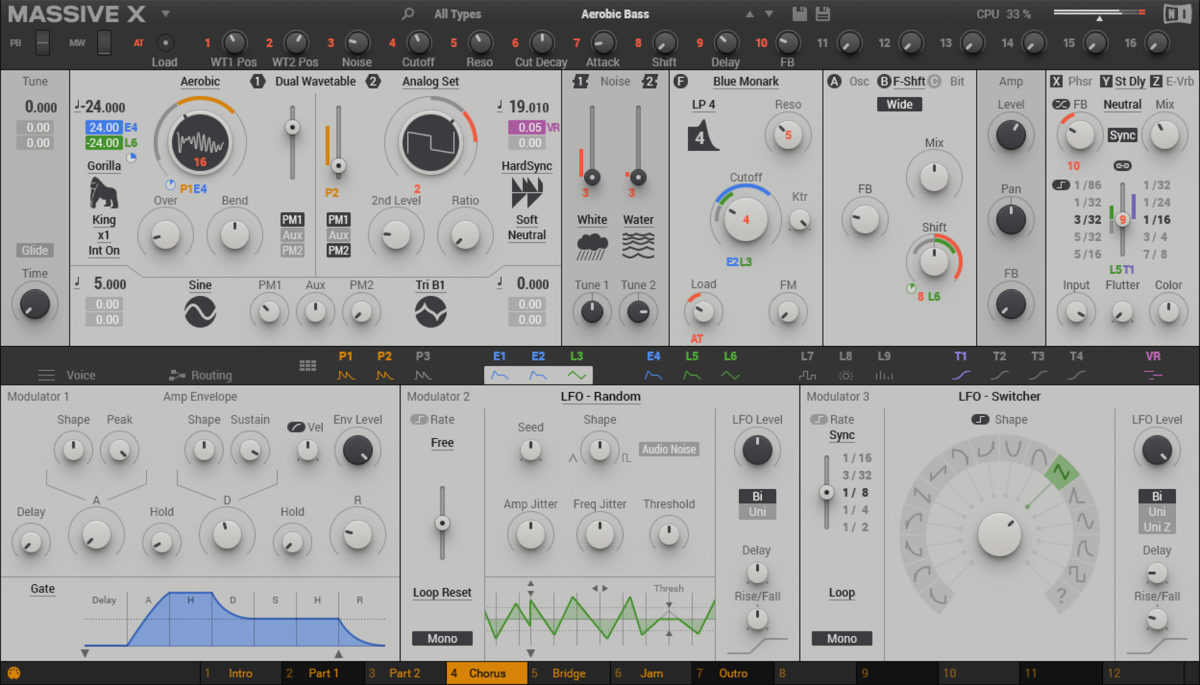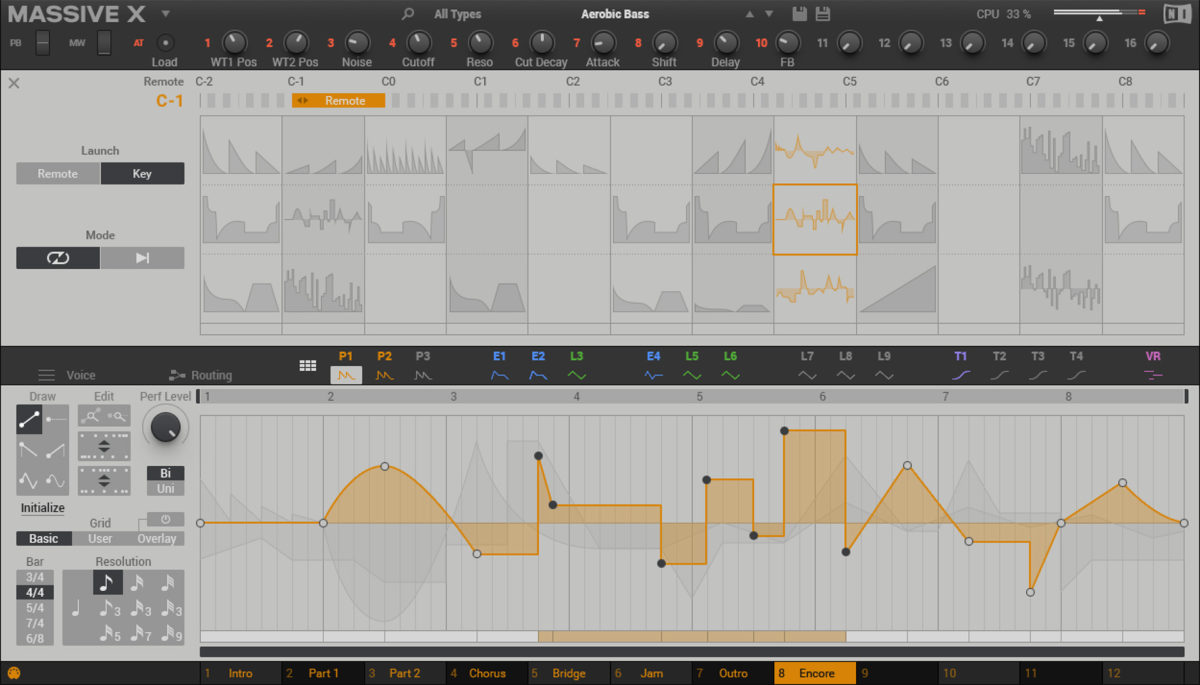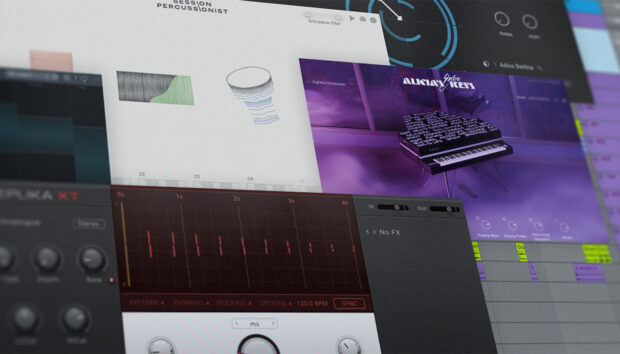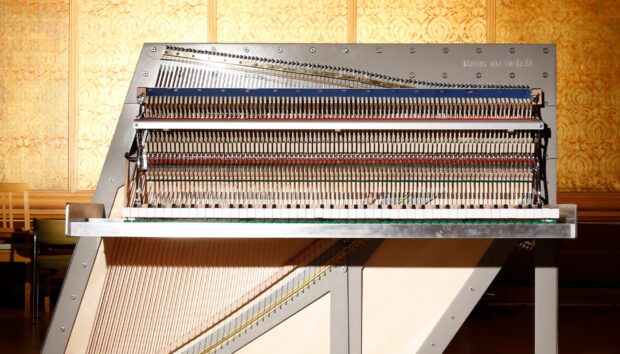
Welcome to MASSIVE X Lab – a series of behind-the-scenes looks at MASSIVE X. Over the coming months we’ll be speaking directly to the people involved in its design and creation, looking in detail at individual sections (oscillators, filters, and more), and covering topics like preset design. In this first instalment, we’re starting with an overview.
The first thing you spot is the radically overhauled interface. Some people here have said it looks clearer (helped even more by the introduction of a resize option), but this doesn’t mean it’s less complex or less flexible – quite the opposite. And it retains many of the interface features that were so popular in MASSIVE, such as the ‘saturn’ rings.

The first section houses two wavetable oscillators and will feature around 125 wavetables at launch, all created by the original designer himself to showcase exactly what these new oscillators are capable of.
But that’s nowhere near the whole story. The wavetable oscillators have 10 different modes (some with up to three sub-modes), each with their own distinct character, even when playing the same wavetables. Then these main oscillators can all be further modulated by two phase modulation oscillators (with a number of wavetables designed specifically to be phase modulated).
Next a Noise section offers up to two simultaneous noise sources, selected from over 100, including natural sources like rain and birdsong.
Moving along, the filter section comprises eight all-new filters, each with several modes. These include classic low-, high-, and band-pass, plus a comb filter and dual filters (one parallel, one serial, with selectable filter combinations for both). Needless to say, we think they sound fantastic.
Many have wondered about the ‘IFX (Insert FX)’ and ‘Insert Oscillator’. In a similar way to the Insert FX in MASSIVE, this section is for introducing new elements and polyphonic processing directly within the internal audio signal path. There are three of these Insert FX slots, which can each be filled by different types of audio effects or by Insert Oscillators (sine, pulse width modulation-capable pulse, or saw oscillators). These can serve either as classic sources for subtractive synthesis (even allowing you to ignore the wavetable oscillators altogether), or building complex DX7-style phase modulation environments.
While Insert FX are designed for creating special effects within the signal chain, Unit FX are sound-shaping tools applied to the final patch, with up to three applied simultaneously. They are the standard types of effects you’d expect, such as delay, reverb, distortion, and flanging, but they have completely new, fantastic-sounding algorithms.
Another new feature is the audio routing section, which is one of the most flexible ever seen in a synth. You can just click and drag connections around between the different modules, letting you route audio, for example, to the filter section, through Insert FX, to the feedback bus, to effects, to more than one destination at a time, and so much more. For example, the routing also enables one wavetable oscillator to phase modulate the other, which was not possible in MASSIVE). It even lets a wavetable modulate itself (phase feedback) via an auxiliary input.
As in the original MASSIVE, envelopes and LFOs are found in the same section, but in MASSIVE X you can have up to nine (the first is always an envelope but the following eight can be any combination you like). This is an area where we’ve added some totally new features, like The Switcher LFO, which allows you to assign up to three modulation sources to the LFO to control morphing between shapes. It’s even possible to route the modulators into the audio bus allowing, for example, the Random LFO to serve as an additional noise source.
Next come three Performers (for sequenced modulation automation), and a powerful Remote Octave section. The Performers let you draw precise rhythmic modulation using specific shapes, at specific time-signatures. The Remote Octave allows live or sequenced triggering of up to 12 Performer snapshots (via MIDI or mouse clicking), and also allows you to copy, paste, and repeat Performer data.
Finally, there are Four Trackers, allowing incoming MIDI data to operate as assignable modulators within MASSIVE X.

Stay tuned for more MASSIVE X Lab updates.















